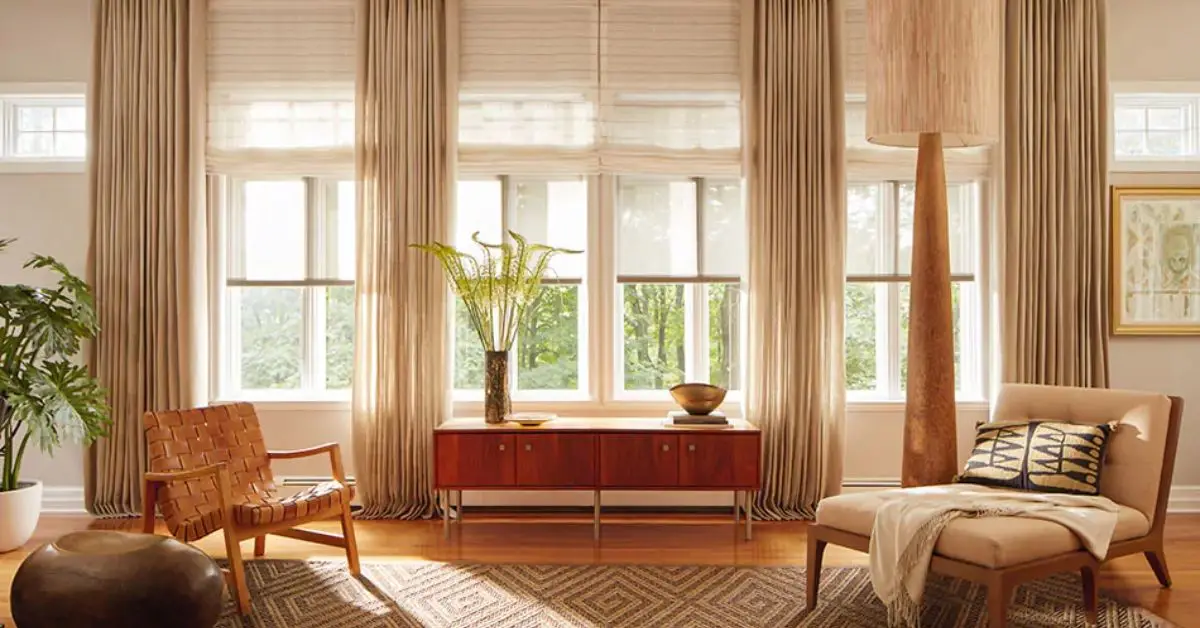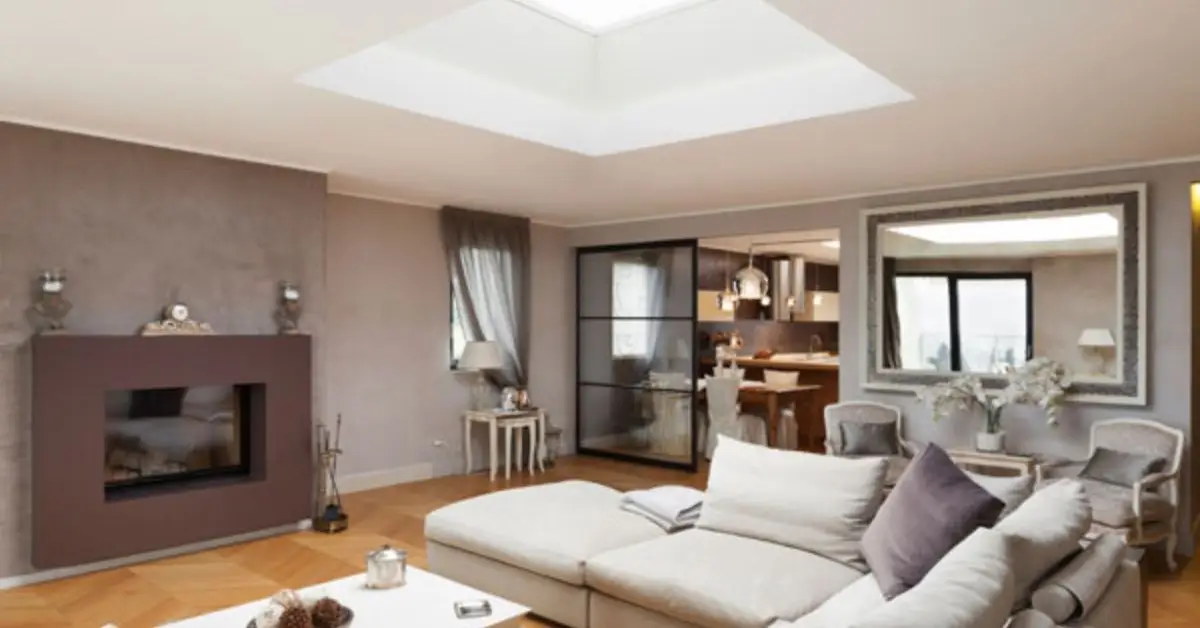9 Easy Tricks to Make Your Home Brighter with Natural Light This Winter
Winter makes even the nicest rooms feel small and tired. I’ve spent time testing practical fixes — not just the usual fluff — so you can actually increase natural light in your home during winter without waiting for spring.
In this guide I give you 9 simple, real-world ways: quick no-cost hacks, smart decor moves, and a few higher-impact upgrades if you want them. Each tip is something I’ve seen work in real homes, and I’ll tell you when a change is instant vs. when it takes a little effort.
You won’t get design theory or vague advice here — just the exact actions I’d take if I wanted to brighten my living room this week. Ready to see the first simple change that gives the biggest immediate payoff?
Why Winter Makes Homes Darker (And Why Light Matters More Now)
Every winter, I notice the same pattern in most homes — even bright spaces start to feel dull. It isn’t your imagination. The sun sits much lower in the sky this time of year, which means light comes in at a weaker angle. You also get fewer daylight hours… so whatever light you do get disappears fast.
And there’s the emotional side of it too. Short, gray days take a toll on your mood and energy. I’ve seen people feel more tired, less motivated, and even a little gloomy simply because their home doesn’t get enough natural light. Harvard Health talks about how light directly affects your circadian rhythm and mood.
That’s why brightening your home in winter isn’t just a design choice — it’s a comfort choice. More natural light means extra warmth, lower heating and lighting costs, and a home that actually feels good to live in. When you fix the light problem first, every other improvement hits harder.
1. Use Sheer or Layered Window Treatments Instead of Heavy Drapes

I’ve lost count of how many homes I’ve walked into where the windows were basically doing nothing because the curtains were too heavy. Thick drapes might look cozy, but in winter they choke the little sunlight you’re already getting.
You don’t need to buy anything expensive. You just need to let the window breathe.
Try these simple moves:
- Swap heavy curtains for sheers so daylight passes through even when they’re closed.
- If you want privacy, layer sheers with thin blinds you can tilt instead of blocking the whole window.
- Keep south-facing windows as open as possible during the day — they get the strongest winter light.
This is one of the easiest changes you can make, and the difference is usually immediate. You’ll feel the room open up the second the heavy fabric goes away. If you want to make sure your lighting setup isn’t secretly reducing brightness, take a look at my guide on lighting mistakes that make homes look dull.
2. Add Mirrors Opposite Your Windows to Bounce Light Deeper Indoors
Whenever someone tells me their home feels dark, mirrors are usually my first suggestion. Not tiny decorative mirrors — I mean mirrors that actually have a job to do. When you place a mirror directly across from a window, it doubles the amount of light that spreads through the room. It pulls the light deeper inside instead of letting it die by the wall.
A few ways to do it well:
- Use large or tall mirrors that catch as much light as possible.
- In hallways, angle a mirror toward the nearest window to pull light into tight spaces.
- Add metallic or glass décor near the mirror to boost the reflection effect even more.
You don’t need to overthink this. Stand in the room, look at the window, and ask yourself: “Where can I place a mirror so it sees the same light I’m seeing right now?” Do that, and you’ll brighten the room without touching a single bulb.
3. Keep Windows Spotlessly Clean (Inside + Outside)

Most people don’t realize how much brightness they lose simply because their windows aren’t clean. Even a thin layer of dust or pollen can block a surprising amount of sunlight. I’ve seen rooms brighten instantly after nothing more than a proper wipe-down.
I keep a simple routine for winter: a quick microfiber wipe on the inside every week, and a deeper outdoor cleaning right before the season starts. Winter light is already weak, so you want every inch of glass working for you.
This is one of the most underrated tips. No spending, no tools — just clear glass and a noticeable jump in daylight. If you’re refreshing your home for winter and want cleaner indoor air too, you can use these natural tricks to remove dog and cat odors.
4. Rearrange Furniture to Clear Window Paths
Before buying anything new, look at what might be blocking your windows. A big sofa, a tall bookcase, or even a chunky indoor plant can absorb half the daylight before it even enters the room.
Think of your window as your “light engine.” Your job is to give that engine a straight, open track.
Try these quick adjustments:
- Move tall furniture away from the window zone
- Leave open space right in front of the window
- Follow my simple rule: nothing taller than the windowsill within arm’s reach of the window
You can make this change in ten minutes, and the brightness jump is almost immediate.
5. Switch to High-LRV Paint Colors (70+ Light Reflectance Value)
If your walls are dark or overly saturated, they soak up winter light instead of bouncing it around. That’s why I rely on high-LRV paint shades whenever someone wants a brighter room. Anything above 70 LRV instantly helps weak winter light travel farther.
Soft grays, warm creams, and off-whites are safe choices. And for the ceiling, I always go with a flat white finish because it reflects more light without adding shine.
If you want to compare shades before choosing, the LRV chart from Benjamin Moore is a good place to start because it lists reflectance values for all their colors.
Walls aren’t just background — they’re reflectors. Pick the right shade and even dull winter light feels stronger.
6. Add Skylights or Solar Tubes for Low-Light Rooms

Some rooms simply don’t get light no matter how much rearranging you do. Hallways, attic rooms, interior bathrooms, and certain kitchens are classic examples. When that happens, bringing in light from above is the most reliable fix.
A skylight pulls in overhead daylight directly, which is especially helpful in winter when side-angle sun is weaker. Solar tubes work the same way but cost much less — they funnel natural light through a reflective tunnel and brighten spaces you thought were impossible to fix.
This is a structural upgrade, yes, but it delivers the biggest leap in natural brightness for rooms that feel permanently dim.
7. Use Glass Doors, French Doors, or Interior Translucent Panels
Sometimes the issue isn’t the room you’re in — it’s the room next to it. If one area of your home gets good daylight and another feels dim, you can let the light travel simply by changing the surfaces between them.
I like using glass doors, French doors, or even interior panels with frosted glass inserts. Frosted glass keeps your privacy while still letting daylight pass through. When you replace solid barriers with glass, the winter sun that hits one windowed room naturally spreads into the next.
If you’ve ever walked through a home where light feels “connected,” this is usually the reason.
8. Light-Colored, Minimal Furniture + Reflective Décor
Furniture plays a bigger role in winter brightness than people realize. Dark, bulky pieces absorb a lot of light — and when daylight is already limited, that absorption hits even harder.
You don’t need a full home makeover. Just shift toward lighter tones and materials that don’t swallow the light.
A few options I use often:
- Pale wood or white-toned furniture
- Glass coffee tables to keep sightlines open
- Chrome, metal, or satin accents for extra reflection
Most articles mention décor, but they rarely talk about winter-specific absorption. In colder months, every reflective surface helps. If you want a reference point, The Spruce’s home-lighting guides break down how reflective materials boost overall brightness without extra fixtures.
The goal isn’t to make your home look minimal — it’s to make it feel brighter without needing more windows.
9. Trim Outdoor Shrubs & Remove Window Obstructions Before Winter

This is one of those simple fixes that almost everyone overlooks. The winter sun sits lower, so even small branches or shrubs can block a surprising amount of daylight. A quick trim before the season starts can instantly change how much light reaches your windows.
If you have outdoor furniture, large planters, or seasonal décor near the windows, move them out of the sun’s path as well. You’ll be shocked at how much brighter the room feels once the view is clear.
As a bonus, your home’s curb appeal gets a lift — so it’s a small input with a double payoff. If outdoor corners near your windows attract unwanted pests during winter, these simple home remedies to get rid of lizards naturally can help keep those areas clear.
Bonus Tips to Maintain Brightness All Winter
Even when you do everything right, winter days can end before you’re ready. That’s why I like pairing natural light with a few simple backups that keep the space feeling bright when the sun drops early.
You can use daylight-simulating bulbs in the evening so the room stays warm and balanced instead of turning yellow or dull. And if you haven’t tried reflective light fixtures yet, they’re worth it — the metal or glass surfaces bounce light much farther than standard matte shades.
These small additions don’t replace natural light, but they help stretch its effect so your home feels bright all day, not just when the sun is out.
5-Second Quick Recap Box
If you’re the kind of person who likes quick takeaways, here’s the short version of everything that actually works:
- Sheer curtains that let winter light through
- Mirrors placed opposite windows
- Clean windows inside and out
- High-LRV paint to multiply brightness
- Trimmed shrubs and clear outdoor views
These are the moves that give you the fastest, most noticeable results without overthinking anything.
If you try any of these ideas, I’d love to hear what worked best for you. Drop your thoughts in the comments — your feedback helps me shape better guides. And if you want more practical, real-home improvements you can use right away, check out the latest updates on Build Like New.
Disclaimer: The information in this guide is based on general home–improvement practices and personal experience. Every home is different, so consider your layout, safety requirements, and local regulations before making major changes. For structural work or electrical upgrades, consult a qualified professional.


